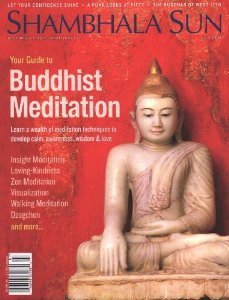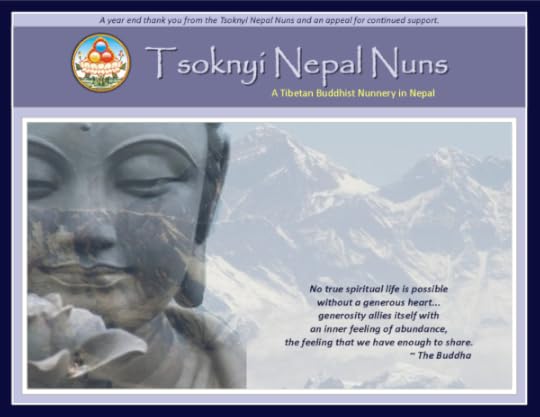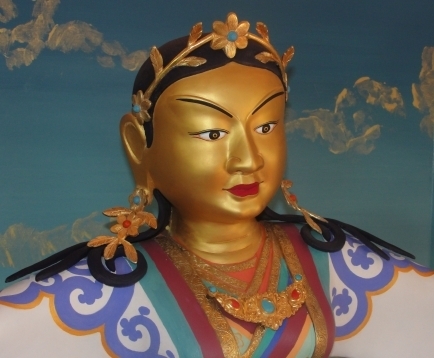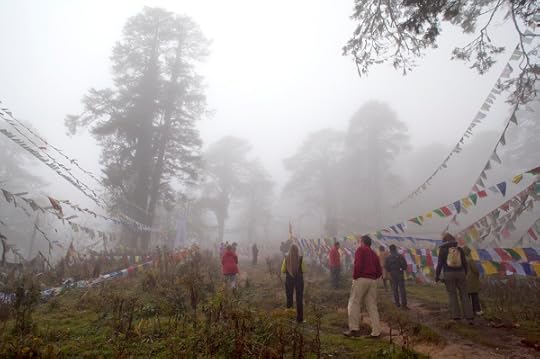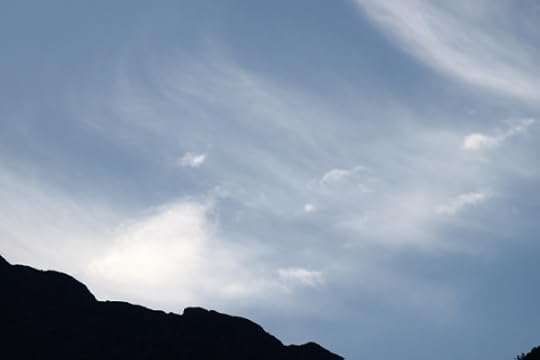Tsoknyi Rinpoche's Blog, page 15
December 22, 2014
Tsoknyi Rinpoche’s Vision and News Update
Please share in the vision of Tsoknyi Rinpoche: A pioneering vision to train nuns to become among the most accomplished Buddhist practitioners and Dharma teachers in the world. Here is the link to the Tsoknyi Nepal Nuns newsletter update ~ a year-end thank you from the Tsoknyi Nepal Nuns and an appeal for continued support. Enjoy!
November 26, 2014
Drops of Nectar: Khenpo Kunpal’s Commentary on the Bodhicharyavatara
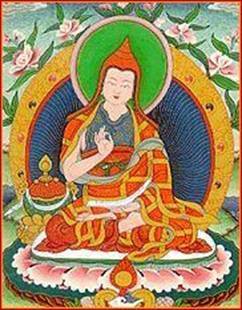
We are happy to be able to share with you, through the kindness of Andreas Kretschmar, the link to:
Shantideva’s Bodhisattva-charyavatara, Entering the Conduct of the Bodhisattvas; accompanied by a translation of Drops of Nectar, an important Tibetan commentary on the Bodhisattva-charyavatara by Khenpo Kunpal (1862-1943)
[Copyright ©Andreas Kretschmar 2003. All Rights Reserved.]
In Chapter One on page 83, you will find a 13-page introduction of this very important work written by Tsoknyi Rinpoche entitled, The Bodhisattva-caryāvatāra: A Perfect Preparation for Vajrayāna Practice. Here is the link and happy reading! http://www.kunpal.com/
The Pundarika Staff
November 21, 2014
When the Iron Bird Flies: NEW release with extra bonus scenes!
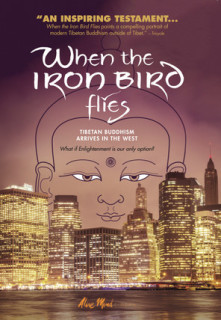
The latest DVD release of When the Iron Bird Flies includes extra bonus scenes! For example, a meeting with Khandrola (the oracle) and Rinpoche with his Mind Life conference group in Dharamsala — Khandrola sings a 10-minute spontaneous “Song of Compassion,” and the new release includes a clip of Tsoknyi Rinpoche talking about Intelligent Guts. The DVD is now available for sale for a limited time at http://chariotvideos.com/documentaryfilms/ironbird/
November 7, 2014
The Two Truths ~ Indivisible
An article, reprinted with permission, by Tsoknyi Rinpoche for Buddhadharma magazine’s Fall 2014 issue:
The Two Truths ~ Indivisible
“When we enter the path, we are working at the level of relative truth, and with practice we may gain insight into the absolute. But we don’t enter the final stage of practice until we realize these truths were never separate.
“The art and beauty of practicing dharma becomes more and more subtle and profound as we learn the dance of the relative and absolute truths. Since the natural state is timelessly present in both, their indivisibility or inseparability is like a single thread interwoven throughout all the teachings, functioning at every level and stage of practice. It is important to recognize that practice solely at the relative level, or even at the level of the absolute, is not so difficult when we keep it separate. The real art comes in uniting the relative and absolute in practice.
“When we first start practicing, we are typically at the conventional or relative level, which when practiced well can eventually lead to a realization of the absolute. However, the final stage, which we are speaking about here, is the realization of the inseparability of the two. When we talk about this unity or indivisibility, it’s not that we have to somehow figure out how to fit two separate, distinct things together, like gluing two blocks of wood into one piece. That would be forcing a conceptual notion of emptiness to connect to clarity.
“In Dzogchen, rigpa, or recognizing mind’s essence, has three qualities or aspects: empty essence, the lucid or cognizant nature, and their indivisible unity. When our meditation practice strays from rigpa, two things can happen: we can overemphasize the empty aspect, causing a kind of blockage, because although it is thought-free, it still involves subtle clinging; there is a kind of stuckness—a lack of naturalness, fluidity, and awareness of the unconfined capacity or totally open nature of genuine rigpa. If, on the other hand, we overemphasize the clarity or lucid aspect, we can become fixated on that and lose the awareness of inner space. Therefore, this subtle art involves unifying the experience of empty nature and lucidity such that the ‘third’ quality of inseparability (the union of emptiness and clarity) may naturally and spontaneously manifest.
“The inner space, or empty aspect, is completely free from any of the four or eight philosophical extremes taught with great precision by Nagarjuna and others. It is also free from birth,abiding, and cessation and from the three divisions of time: past, present, and future. It has neither center nor circumference and is completely devoid of all reference points. When the conceptual mind is dropped, there is still a non-conceptual cognizance, which is without reliance or dependence upon conceptual signs and symbols and is aware of its own nature as emptiness, or inner space.
“Mind then has two aspects: its own basic nature, which is primordial wisdom, and dualistic consciousness. One way of putting this is that it can either be confused lucidity or the lucidityof wisdom. In either case, the empty aspect is always completely open and free. In the Tibetan language, this naturally lucid or clear aspect of mind is called salwa, and it is emphasized mostly in the Vajrayana tradition. In the sutra system, the emphasis is more on the empty nature, and of course when we speak about the indivisibility of lucidity and the empty nature, then it is the same for both sutra and tantra. The differences in emphasis are related to where we are on the various stages of the path.
“In the Vajrayana system, when we talk about the fundamental luminosity of mind, it is described as the vajra heart, and in Dzogchen, it refers to clear light or luminosity. In these teachings there’s more emphasis on the clarity or lucid aspect. Terminology can be a bit confusing, so keep in mind that the Tibetan word salwa is translated variously as luminosity, lucidity, cognizance, consciousness, knowing, or clarity, depending on the translation and the specific teaching context. But the basic point here is that salwa can either be confused or not, and the empty aspect is always free and open. Normally our day-to-day experience is at a gross level of consciousness in which there’s no awareness of the inseparability of the empty nature and lucidity. The natural state of mind appears divided, and the natural unity of the two truths is mistakenly separated into seemingly distinct entities of subject and object. However, within that split mind there is a seed of primordial wisdom through which we can realize the indivisibility of the empty and lucid natures.
“Through the timely methods and direct instructions of a genuine teacher, confused mind is cut through, allowing us to experience a taste of what I call “baby rigpa,” which with continued practice goes through various stages of growth and development. When we practice rigpa, we become naturally aware of the nonconceptual lucidity and its open nature. It is not something complex; in fact, it is actually quite simple. It involves a subtle shift in our view, because rigpa is there and not there. It’s like rediscovering our true home, which has always been present. It has a kind of naked beauty that is potentially very rich, yet at the same time utterly ordinary—nothing has to change or be modified. Of course, clear and precise language is tough here and much too coarse to describe this essentially indescribable experience.
“In the Bhadrakalpa Sutra, the Buddha said,
My dreamlike form
Appeared to dreamlike beings
To show them the dreamlike path
That leads to dreamlike enlightenment.
“Experience is dreamlike because appearances are a product of many kinds of causes and conditions temporarily coming together, such that nothing ever remains the same; everything is dependent on other things for its existence and is compounded, made up of many parts. In this sense, appearances are absolutely empty and relatively mere, which in Vajrayana is called ‘appearances devoid of inherent existence.’ It is not easy to know how things actually exist because our normal everyday experiences seem so vivid and compelling, and everything around us feels real—as if it truly existed independently. We get confused because our limited conceptual mind cannot grasp the view of the absolute, and yet we can use this mind to a certain point in our practices. But eventually we have to shift our practice and include other methods, such as samadhi meditation and contemplation. Through these practices, the conceptual grasping mind recedes, revealing the natural and luminous mind, which has the capacity to know the indivisibility of the two truths, a state of simplicity free from all kinds of conceptual limitations.
“It is important to understand what egolessness means at both the relative and absolute levels. Relatively, our mere I exists and functions in the same way as other things merely exist, such as forms, smells, and sounds. We do have a
mere I that acts, has relationships, takes refuge, and makes decisions, in the same way that the earth, sky, and water function and have a relative existence. The mereness of things actually allows us to intelligently, compassionately, and creatively engage in the drama of life without a lot of attachment and grasping. It is the light touch: open, fully present, flexible, and gutsy. This I is neither something truly existent (permanent, independent, singular) nor nonexistent—it is simply mere. What is refuted in the dharma is the solid or reified I, not the mere I.
“When we try to find the essence, or true nature, of the mere I, we run into problems. No matter how hard we try, we cannot find it upon investigation; this also applies to all phenomena—whether subjective, such as our feelings of self, or objective, such as objects of perception. Even if we look at one of the billions of cells that make up our bodies with a sophisticated microscope, we see that no ultimate or true cell can be located, nor can the label “cell” be found. Any label we apply to the next level of complexity also falls away. We can’t find an object (or subject) that is permanent, singular, or independent. It just keeps changing into smaller and smaller parts swirling into smaller and smaller parts. In this sense, the deeper we look into what we perceive as reality, the less we find. It is not easy to know how things actually exist because our normal experiences seem so vivid and compelling, and everything around us feels real.
“The opposite is also true: the less we investigate and feel the nature of things, the more solid the mere I and phenomena can feel. A mantra that’s helpful to repeat in situations where we feel hooked by our clinging to phenomena is: It feels real, but it is not true. The label of mere I is simply an imputation, or conceptual designation, that we make on the basis of the temporary aggregation of parts called the five skandhas. The crux of the problem is
that we have a very basic root misconception about all this. Why? Because when we assign an intrinsic or true reality, we reify the mere I (and phenomena) due to our fixating tendencies and habits accumulated over countless lives.
“Why does our sense of self feel so real, permanent,and solid? It’s because we have frozen the naturally light, fluid, and open experience of the mere I, creating endless arrays of conceptual boxes. Even when we investigate and see that all phenomena, including the mere I, lack real existence, we typically do not feel it—it remains in the head and can have a cold, arid, lifeless quality that is not fundamentally transformative. The reified I changes with new information but does not transform. We try repeatedly to change our lives and do this and that practice, but we continue to get stuck and frustrated; then we end up going the wrong direction and losing our way. This is because the cognitive mind, so strongly developed and employed in the speedy modern world, can know feelings but does not feel the feelings fully. So like a bird with one wing trying to fly, we don’t get very far.We need to train and educate the clarity aspect of mind in harmony with the subtle body, the underlying nature of which is essence love.
“The Tibetan term for essence love is nying-je, which is translated as ‘noble heart’ or ‘lord of the heart.’ It refers to a quality of heart that is completely unconditional and free from all attachment. This kind of love—a spark of buddha nature that resides within all of us—is contrasted with conditional love, which is based on various levels of giving and receiving love. Essence love is the pure feeling within and behind all conditional feelings. Once we connect again and again with this essence love, having cultivated a nonjudgmental mind, our dharma practice can be authentic and life changing. Otherwise there is the danger of using dharma as a kind of pretense, a game of self-deception. Over time, all of us can learn to dance and feel the rhythms and movements of the heart and the head, wisdom and compassion, thinking and feeling, and ultimately that of the absolute in the relative and relative in the absolute.”
(Photos courtesy of Nathaniel Dorsky, ©2014)
October 23, 2014
Dzogchen Practice Intensive: Crestone, CO 8/15-21/2014
Thank you to photographers Richard Heckler and Kalleen Mortensen for capturing the magical moments of Rinpoche’s second Crestone retreat this summer. We hope you sense the pervasive and inherent joy of the Dzogchen Practice Intensive through these portraits of dedicated and attentive students.
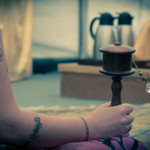
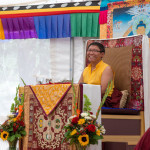
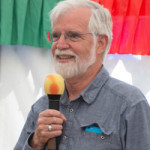
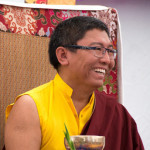
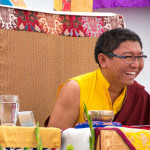
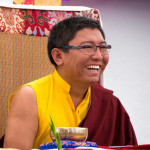
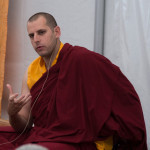
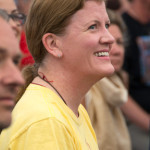
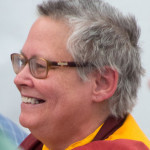

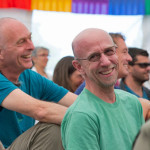

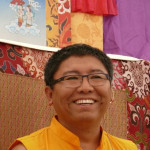
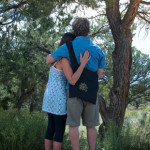
October 17, 2014
Letting It Be: Resting in Radical Simplicity (August 2014/Crestone, CO)
Having cleverly deleted the retreat summary notes for Tsoknyi Rinpoche’s first Crestone, CO retreat this year (Letting It Be: Resting in Radical Simplicity) August 8-14, 2014, we thought a series of photo albums might be even better in telling the story of our week together at the Yeshe Rangsal retreat land. We had approximately 150 retreatants in attendance and eight people took refuge.
Here are the four retreat photo albums–many other people were helping behind the scenes, and we apologize in advance for unintentional omissions, but we could only capture just so many. Please click on the images individually if you like, as some of these smaller thumbnails don’t show the whole picture.
1. Cast of “characters” in the background
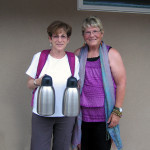
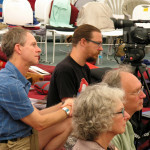

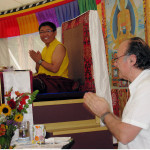
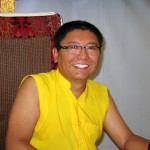
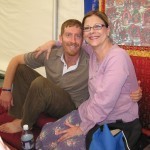
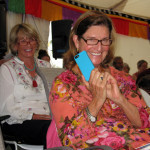
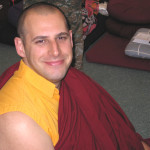
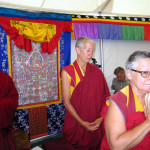
2. Inside and outside the teaching tent
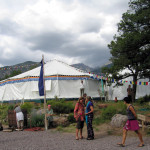
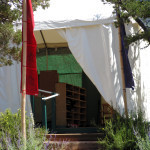
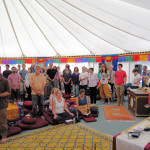
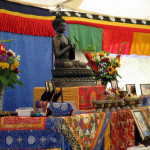
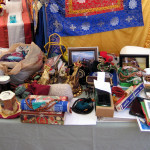
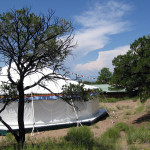
3. Retreatants on breaks between teachings and meditation
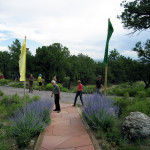
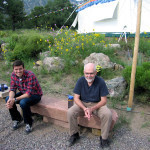
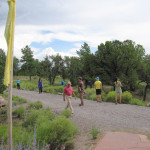
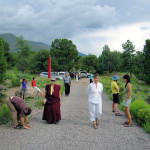
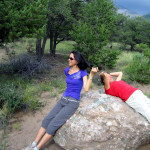
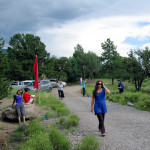
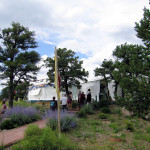
4. End of retreat ceremonies
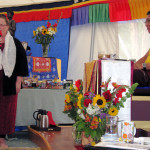
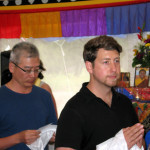
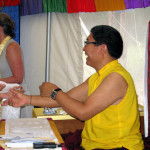
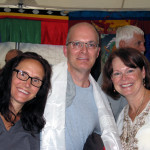
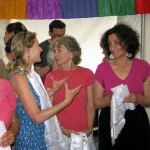
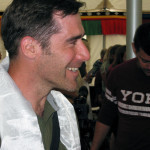
September 15, 2014
Tsoknyi Rinpoche Interview on Lung
“In the 21st century, the subject of healing the subtle body is crucial. I sometimes say that for western Dharma practitioners, “body enlightenment” is more important than the enlightenment of the mind.” ~ Tsoknyi Rinpoche
*Q: In your new book “Open Heart, Open Mind” you discuss the subtle body and its influence on our lives. How can we understand the subtle body?
Rinpoche: In the Tibetan Buddhist tradition, the subtle body (Tib. “lu trawa”) connects the body and mind and is the home of the emotions that influences both.
Q: So it is a point of great importance that is largely unknown in western psychology. Can you please explain the system of the subtle body in more precise detail?
Rinpoche: The subtle body is composed of three interrelated aspects. The first consists of what in Tibetan is called “tsa”, (“nadi” in Sanskrit), usually translated as channels. They are closely related, but not the same as a network of nerves that extend throughout the body. These channels are the pathways that allow sparks of life(“thigle” in Tibetan, “bindus” in Sanskrit) to circulate and can be compared to neurotransmitters–chemical messengers that influence our physical, mental and emotional states.The “thigle” circulate within the channels due to the subtle energy or inner wind, known in Tibetan as “lung.” (“prana” in Sanskrit).
Q: A certain amount of lung is a normal part of the subtle body. But there are also disturbances in the wind energy. Is it possible that lung disturbances can get intensified through meditation practice and manifest negatively at the level of feelings?
Rinpoche: Clearly, yes. In anything we do, whether during meditation or in any situation, lung can be intensified. This can happen when we feel overloaded and “stressed out” or when our emotions get quite strong, even overwhelming. Any practice we do driven by the wish to perform well or succeed with a corresponding lack of relaxation and lightness increases this intensity and creates restlessness. I am speaking here about the attitude of a forced, driven, goal-oriented practice. To take one example, if you want to quickly recite 100,000 mantras within a few days this may cause what we call lung, a disturbance in the energy, because you have unnaturally put yourself under too much pressure.
Q: What exactly happens at that time?
Rinpoche: When the mind continuously demands greater speed due to over-excitement, a high degree of pressure, and a need to perform too quickly, the subtle body eventually becomes exhausted. Through excessive activity on the mental level a message is sent to the subtle body to push, go faster, with the result that the restless lung is strengthened. The subtle body’s natural equilibrium gets out of balance and at some point it becomes a lung disturbance.
Also, being over-seriousness, uptight, having strong grasping and mental restlessness are conditions that can lead to a feeling of agitation and restlessness in the subtle body. And these habitual patterns can become deeply imprinted within the channels due to this stirred up lung. That is why we should learn how to handle this energy sensibly.
Q: How should we deal with a lung imbalance?
Rinpoche: Overactive lung confuses and disturbs the subtle body nervous system and becomes increasingly rigid and solidified–and because of this the natural capacity to feel compassion becomes blocked–your innate ability to feel unconditional, unbiased love, warmth and openness. Without this capacity it will be impossible for you to feel loving kindness and compassion towards others, and to love them. We have to reconnect with our basic nature and relax in that. There is also a special yogic breathing exercise called “vase breathing,” which can serve us well here. The breath is closely connected to the subtle wind energy. In my book, Open Heart, Open Mind, I devote a whole chapter to this method.
Q: It is interesting that you mention yogic breathing. Is it worthwhile to practice yoga, chi gong and pranayama in order to be more grounded in meditation? In traditional Tibetan Buddhist teachings, it is my understanding that instructions on breathing exercises are normally not given.
Rinpoche: Yoga, chi-gong and similar energy-balancing can be extremely helpful in cases of disturbed lung. When there is an imbalance the subtle drops (Tib. “tigle”) are not able to circulate freely in the central channel. This leads to blockages, not on the mental level or in the physical body, but the feeling energy is blocked. In these cases these kinds of exercises can be beneficial to restore a more natural balance. I think that many older Tibetan lamas are not aware of the fact that establishing this equilibrium in the subtle body is so crucial in the West. Traditionally, in Tibetan Buddhism the methods you mentioned in your question are hardly used in relation to the body. That is why they are simply not considered by many teachers, and they do not know much about them. It is also connected with the fact that in Tibetan society, that the emotional body was generally very stable and that there was more of an emphasis on healing the physical body, such as with the neck or with joints and so on.
Furthermore, in Tibet there was generally a lack of mental training and education and until the Chinese invasion, a full education was possible for the most part only in the monasteries. There was no public school system and much of the population consisted of nomads, very simple people with a sweet, cheerful nature. That is why there was not a great need for emotional healing–this aspect was actually pretty good. In order to develop the mental faculties and mind training, methods for the detailed visualization of a mandala were used. And it was the “awakening” quality of the intelligence that was important to cultivate through these practices.
In more recent times, many young lamas have recognized the lung imbalance in modern societies and its causes. Educational systems strongly emphasize cognitive development and the subtle body aspect, the emotions, are often blocked because of lung disturbances and other reasons. Various methods for energy healing can be useful, and I would strongly encourage people to practice these according to their individual needs.
Q: Sometimes I think the cultural differences between East and West are so great that we should be quite careful about simply taking on Tibetan customs.
Rinpoche: I agree with that up to a point. It is not necessary for a person in a modern society to try to be Tibetan and imitate Tibetan culture and customs in a rigid way. The basis of the Dharma is the transformation of the five poisons (ignorance, attachment, aversion, pride and jealousy) and the habitual tendencies that are more or less applicable to all cultures. Different cultures have unique habitual patterns and we need to clearly discriminate what is transformative within our cultural context.
But certainly there are certain teachings which are shaped by Tibetan culture, and if one has no understanding of the cultural context, then these teachings and practices may not have the capacity to transform one’s mind.
In modern societies, developing cognitive understanding is strongly emphasized for young children at a very early age, and this can create an unhealthy residue of tension in the subtle body. This imbalanced approach towards cognitive development is why it is so important to transform the subtle body. You handle thinking very well and can become familiar with the Dharma on a theoretical level, but we need to bring this understanding into experience so that the blockages in the subtle body can be healed. In the 21st century, the subject of healing the subtle body is crucial. I sometimes say that for western Dharma practitioners, “body enlightenment” is more important than the enlightenment of the mind.
Q: The hectic pace of modern life often causes correspondingly hectic lung activity in us. What can you recommend to counteract this?
Rinpoche: First, you should find out your own inner speed limits. An energetically excessive speed can manifest on three levels: in thinking, feeling, and in the body. Practice being aware without judging or analyzing, your emotional condition and also the overall sensitivity of your subtle body. You can use “the gentle vase breath” to bring the lung back to its natural place, its home, residing slightly below the navel. in this way you can slow down the excessive speed in your subtle body and think clearly and perform physical activities and not burn out.
Q: With growing awareness in our meditation practice, our habitual disturbances also become more noticeable. How can one get control over a disturbance, without giving oneself over completely to its power?
Rinpoche: Be kind to it. Welcome it: “Okay, it is true that I experience some disturbance in this moment, but it is not real. It is only my long-established habitual pattern.” Often when something external attracts your attention it immediately activates a dormant tendency. As a result of this, you believe that your experience is happening fully, 100% real, and everything is exactly as you perceive it: solid, truly “out there.” But really, the external event is simply a trigger.
The external object may contribute only 5% towards causing the disturbance. But when that habitual pattern is stimulated, even if only briefly, it provides the remaining 95% of the experience to come into being. At this point, you can communicate with your habitual pattern. Recite the following mantra: “It seems real, but it is not true. It is not me.” If you can manage that, your life will be a lot easier.
*Source: Based on an Interview for Tibet & Buddhismu, March 28, 2012 entitled, “Tsoknyi Rinpoche on Lung”
August 19, 2014
Dorje Yudronma Consecration Film
We are happy to provide you with this link to the film of Dorje Yudronma’s consecration by Tulku Sangnag on March 22, 2014. Please enjoy the commemoration of this event by Doug Beechwood of Spiral Media.
July 30, 2014
Dreamlike Journey Documentary
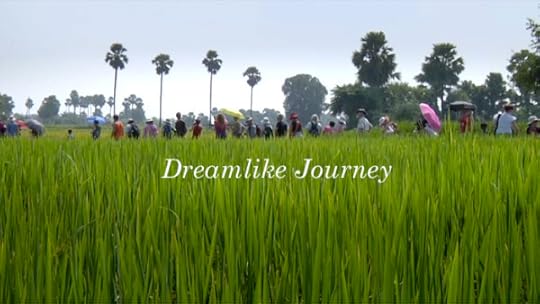 DREAMLIKE JOURNEY is a magical travel journal about a Buddhist pilgrimage made in 2011 by Tsoknyi Rinpoche and a group of his students and close friends to India, Nepal, and Bhutan. Beautifully filmed and produced, the film takes us to the inauguration of a nunnery in northern Nepal, walks us through the places Lord Buddha walked more than 2500 years ago, and reveals the pilgrims’ ceremonies in some of the most sacred caves of Bhutan. There are appearances and short talks by HH Gyalwa Karmapa, HE Chokyi Nyima Rinpoche, HE Nyoshul Khen Rinpoche Yangsi, HE Dilgo Khyentse Rinpoche Yangsi, and of course Tsoknyi Rinpoche.
DREAMLIKE JOURNEY is a magical travel journal about a Buddhist pilgrimage made in 2011 by Tsoknyi Rinpoche and a group of his students and close friends to India, Nepal, and Bhutan. Beautifully filmed and produced, the film takes us to the inauguration of a nunnery in northern Nepal, walks us through the places Lord Buddha walked more than 2500 years ago, and reveals the pilgrims’ ceremonies in some of the most sacred caves of Bhutan. There are appearances and short talks by HH Gyalwa Karmapa, HE Chokyi Nyima Rinpoche, HE Nyoshul Khen Rinpoche Yangsi, HE Dilgo Khyentse Rinpoche Yangsi, and of course Tsoknyi Rinpoche.
Directed by Sofia Abboud with stunning cinematography by Adrian Alba and Juan Andres Videla, as well as lovely original music by Gaston Blander and Agustin Risotti, please visit their web site www.dreamlikejourney.com and ‘like’ their Facebook page at https://www.facebook.com/dreamlikejourney.
Courtesy of Sofia and her crew, here are two short video clips you can access here: https://www.youtube.com/watch?v=P5iqO-M4H5U and https://www.youtube.com/watch?v=GKdFcrth1-E
July 10, 2014
Dzogchen: The Sky of Wisdom (July 2014 Shambhala Sun)
We are happy to share with you an article by Tsoknyi Rinpoche entitled Dzogchen: The Sky of Wisdom as published in the July 2014 issue of the Shambhala Sun. It’s free to download here: http://bit.ly/1neHz9g
The PDF will automatically download onto your computer and includes a subscription offer the magazine, as well. Enjoy!
